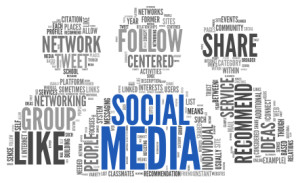by gabriel_sales | Oct 24, 2013
 This blog discusses the new challenges in sales, how the B2B buying process has changed, and how to adapt to the concept of “bought then, sold“.
This blog discusses the new challenges in sales, how the B2B buying process has changed, and how to adapt to the concept of “bought then, sold“.
If your team is accountable for growth, your challenges remain the same: set strategy, generate qualified leads, develop and close—with constant pressure to control your cost of sale. But in today’s digital landscape, your buyers are becoming more self-directed. They want to buy on their own time and expect to be educated digitally. Only once they feel educated on the concept of “bought then, sold” they are ready to be engaged by a sales rep.
In addition, over the past four years, call-to-connect ratios have plummeted, so inside reps are half as effective. Cold calling can still work in some scenarios, but it is more expensive. Trade show costs are also increasing, which is reflected in the rising cost per lead. Finally, email marketing is also more competitive with decreasing ROI.
Today, none of these tactics work in isolation unless (according to the top marketers in the US), you support your pipeline development with inside sales and a commitment to content marketing, SEO and social media—with the top 10% of marketers implementing marketing automation. This is because your buyers are now relying on digital education to help them understand their needs and sort through their options.
More and more products today are “bought then, sold,” and this buying process affects your sales process in one of two ways. Either, buyers take longer to educate themselves digitally, so you need to nurture leads longer. Or, the opposite happens, and your buyer does not even want to speak to a sales rep until feel well educated and are near a buying decision.
Statistics show that 80% of leads are passed to a senior sales rep too early, and 70% of mishandled leads end up buying from a competitor. So, the biggest mistake you can make is to try and close before your buyers is ready to buy. This will drive away your buyer and squander your existing lead generation budget.
The new rules of buying and selling mean you need to:
- Create relevant buyer content for both sales and marketing
- Score leads to get buyers to closers at the right time
- Nurture leads longer, at a lower cost
- Push content across all formats into social media
With a commitment to this type of alignment, you can expect substantial revenue (157% growth) at a decreased cost of sale within 18 months to pull away from the competition.
For a more detailed discussion of this topic of “bought then, sold” or to learn how we can help, watch this quick overview video.
by gabriel_sales | Oct 21, 2013
 In the whizzing world of social media, it seems like everyday, at least one of your platforms has a new feature, functionality or update. You finally get used to your new homepage or profile layout, and Facebook changes it again the next day.
In the whizzing world of social media, it seems like everyday, at least one of your platforms has a new feature, functionality or update. You finally get used to your new homepage or profile layout, and Facebook changes it again the next day.
If you want to use social media as a part of your B2B marketing strategy, it pays to be in the know of the constant changes these sites make. While not every change may lead to a change in your strategy, it is good to make sure you know what’s going on, so all of your bases are covered.
Here are 3 Recent Changes in B2B Social Media Marketing
1. Google wants your blogs to be more relevant and less keyword-obsessed.
Google started using a new search-algorithm in late August called ‘hummingbird’ that is semantic-based and is supposed to be more conversational. In terms of written content like blogs, this means that simply throwing the same phrase or keyword in there 10 times is no longer going to do anything. Google now rewards high-quality, original blog content that truly answers the question it says it does. Google has also started featuring an “In-depth Articles” section on some search results pages, which means we could see an increase in the average length of blog posts.
2. (Almost) Everything is searchable on Facebook now.
Earlier this year, Facebook released its Graph Search, which allows users to search for people via “likes” or other demographic details (subject to privacy settings). Last month, the functionality of Graph Search expanded to include status updates, photo captions, check-ins and comments in search queries. This new search capability makes it easier to find information regarding a specific place or topic and will also help open up a new audience for businesses doing online marketing.
3. Twitter has a new recommendation notification.
The pace that Twitter moves makes it hard to keep up with everything and everyone you have interest in. If you aren’t on Twitter 24/7, it is likely you are going to miss something like a great retweet or a prospect you could have followed. @MagicRecs was released last month by Twitter to help eliminate this problem by giving you “personalized recommendations when multiple people in your network follow the same user or favorite or retweet the same Tweet.” Using @MagicRecs, you can stay on the pulse of Twitter with no little to no effort on your part.
If you’d like to learn more about Google’s recent changes, click here. If you have any questions or need help with B2B social media marketing, feel free to contact us.
by gabriel_sales | Oct 18, 2013
 As marketing automation experts, we’re always on the hunt for ways of improving our process and outreach while simplifying our jobs and day-to-day, repetitive tasks. Exploring the web for tools is a key way we discover what’s new, hot and working in the world of sales and marketing automation.
As marketing automation experts, we’re always on the hunt for ways of improving our process and outreach while simplifying our jobs and day-to-day, repetitive tasks. Exploring the web for tools is a key way we discover what’s new, hot and working in the world of sales and marketing automation.
Here is one we found recently and 8 ways to use it:
If This Then That (IFTTT)
This scripting service integrates with a large selection of ‘channels’ (e.g. Facebook, Gmail, Box, etc.) and allows you to very simply create ‘recipes’. The recipes are quite simple to create and based of the formula, “If THIS, then THAT.”
Here are 8 ways you can use it for marketing and business automation:
1) If “You post to Twitter with hashtag #marketingautomation”, Then “Post to Your Facebook Page, Too”. (automates social messaging distribution)
2) If email has an attachment, then save to Box (prevents losing documents and improves project collaboration).
3) If new industry news is published, then save to Evernote (or send me an email). (Help with content marketing ideas)
4) If someone posts job with keyword, e.g. “sales” on Craigslist, then send me an email. (If you are a service provider, you can ask if they would consider an outsourcing to a firm instead of hiring in-house)
5) If you add a new contact to your iPhone, then automatically send a “nice to meet you” email. (automates follow-up)
6) If you send a IFTTT an SMS message with tag ‘cal’, then automatically add to my Google Calendar. (improve speed of saving and remembering events)
7) If VIP email received in Gmail, then use Pushover to send me a text message notification (stay on top of critical emails)
8) If you post to your WordPress blog, add it to Facebook company page (More social and content automation).
These are just a few ideas we’ve created or come across that are effective for automation in our marketing and our business. Making life easier to focus on the most important tasks in business and life is the main purpose of setting up these recipes.
To read more educational content on marketing automation, click here.
by gabriel_sales | Oct 16, 2013
 One of the most critical tasks you can do when you are in B2B is building your B2B marketing database. Having a growing database of people to educate on industry topics and your products/services will be one of the defining factors in your company’s growth (or decline if the database is stale or waning). Continuing to build (and nurture) this database will help prevent major valleys in your sales revenue.
One of the most critical tasks you can do when you are in B2B is building your B2B marketing database. Having a growing database of people to educate on industry topics and your products/services will be one of the defining factors in your company’s growth (or decline if the database is stale or waning). Continuing to build (and nurture) this database will help prevent major valleys in your sales revenue.
To best build and manage your B2B marketing database, we recommend using marketing automation software as your centralized B2B marketing database tool. Marketing automation software not only provides excellent contact database storage functionality (e.g. cloud, flexible volumes), it has other marketing functionality that allows you to do the following to maximize the use of your database:
- send automated mass & targeted messaging
- quickly build effective landing pages that support your lead generation
- segment your contacts in a variation of ways to customize your outreach
- analyze the contacts in your database on an individual and collective basis
- progressively score & grade contacts based on implicit & explicit elements
- integrate with other tools that provide extended intelligence
Over 3 years ago, we migrated our entire marketing database to a marketing automation software and the improved marketing and sales functionality has helped us improve top-to-bottom funnel conversions exponentially.
Using marketing automation software as your main B2B marketing database has a number of positive benefits to your marketing and sales team. Adopting this as a best practice in your B2B organization is one of our highest recommendations and we’ve been helping many businesses adopt this into their B2B marketing database strategy.
To learn more about the value of marketing automation, you can find more educational content here. Please feel free to contact us with any questions.
by gabriel_sales | Oct 11, 2013
 For B2B companies today, filling your sales pipeline is less about selling and more about making authentic connections. Here are 7 tips to start filling your pipeline today:
For B2B companies today, filling your sales pipeline is less about selling and more about making authentic connections. Here are 7 tips to start filling your pipeline today:
1. Be talkative and get contact information when you are part of a group or casually “networking”.
Often times a perfect candidate for your sale is someone sitting next to you at dinner or playing pick-up soccer with you. You never know unless you start a conversation and ask.
2. Don’t forget to put that data in your database.
Sure you got an email or business card, but make sure that gets into your CRM so you can add follow-up and include them in your campaigns and prospect nurturing.
3. Rent a list and start calling.
There are plenty of vendors out there who have targeted lists that you can rent and start calling potential prospects to help fill your sales pipeline. You can drill down to very specific data points, including company size, revenue, title, position and more to find the perfect match to your existing buyer personas.
4. Optimize landing pages for lead conversion.
Creating landing pages based on each segment of your target audience can be a great way to put leads in the sales pipeline. For instance, if you are selling a B2B technology solution, you may want to make one landing page for IT people and one for management. By speaking to the specific concerns and needs of each customer segment, your customers feel more comfortable taking the next step.
5. Improve targeting of decision makers (do the work upfront).
Before you start making calls and sending emails, it is important to take the time to understand your ideal customer profile. By understanding that demographics of the people you are targeting (title, geography, company size, etc.), you can craft more personal messages to improve conversion.
6. Craft an educational content offer.
When you send out your first piece of marketing content, send something that is purely educational. If a prospect feels like they are immediately trying to be sold, they are not going to go into your pipe. They might even end up going to your competition who does not try to pressure them before they were ready to buy.
7. Make opening intro free of sales and marketing lingo.
When crafting the messaging and scripts for your sales and marketing campaigns, try to keep the words “sales” and “marketing” out of it. When it comes to filling your pipeline, you should be focused on education to create awareness and desire, not selling.
For more B2B sales tips to fill your sales pipeline, you can read more educational content here. Please feel free to contact us with any questions.
 This blog discusses the new challenges in sales, how the B2B buying process has changed, and how to adapt to the concept of “bought then, sold“.
This blog discusses the new challenges in sales, how the B2B buying process has changed, and how to adapt to the concept of “bought then, sold“.




